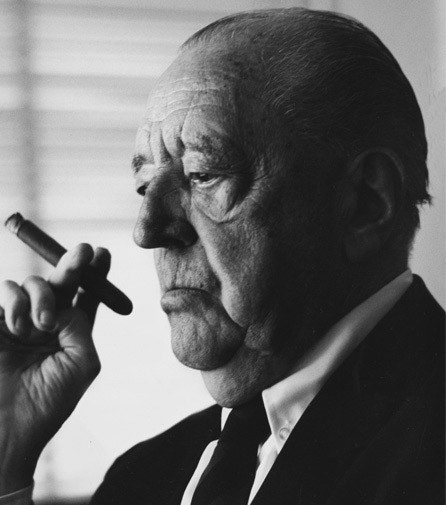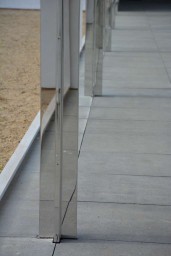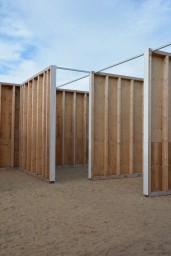Ludwig Mies van der Rohe

Ludwig Mies van der Rohe (born Maria Ludwig Michael Mies; °Aachen, March 27, 1886 – †Chicago, August 17, 1969) was a German-American architect.
He worked in his father’s stone-carving shop and at several local design firms before he moved to Berlin, where he joined the office of interior designer Bruno Paul. He began his architectural career as an apprentice at the studio of Peter Behrens from 1908 to 1912, where he was exposed to the current design theories and to progressive German culture, working alongside Walter Gropius and Le Corbusier, who were later also involved in the development of the Bauhaus. Mies served as construction manager of the Embassy of the German Empire in Saint Petersburg under Behrens.
Ludwig Mies renamed himself as part of his rapid transformation from a tradesman’s son to an architect working with Berlin’s cultural elite, adding “van der” and his mother’s surname “Rohe”, using the Dutch “van der”, because the German form “von” was a nobiliary particle legally restricted to those of genuine aristocratic lineage.
In 1913, Mies married Adele Auguste (Ada) Bruhn (1885-1951), the daughter of a wealthy industrialist. The couple separated in 1918, but had three daughters: Dorothea (1914-2008), an actress and dancer who was known as Georgia, Marianne (1915-2003), and Waltraut (1917-1959) who was a research scholar and curator at the Art Institute of Chicago. During his military service in 1917, Mies fathered a son out of wedlock. In 1925 Mies began a relationship with designer Lilly Reich that ended when he moved to the United States; from 1940 until his death, artist Lora Marx (1900-1989) was his primary companion. Mies carried on a romantic relationship with sculptor and art collector Mary Callery for whom he designed an artist’s studio in Huntington, Long Island, New York.
Every aspect of his architecture, from overall concept to the smallest detail, supports his effort to express the modern age. The depth of meaning conveyed by his work, beyond its aesthetic qualities, has drawn many contemporary philosophers and theoretical thinkers to continue to further explore and speculate about his architecture.



























